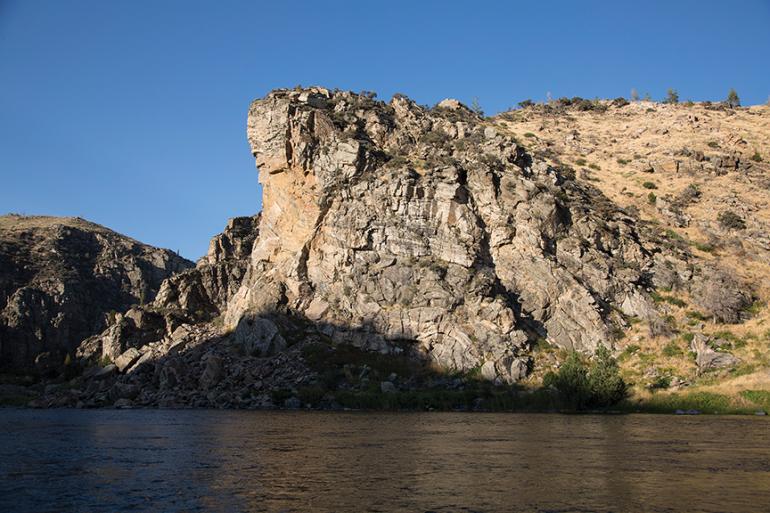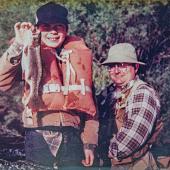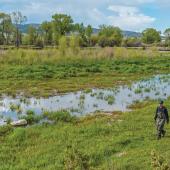Story in Stone
Madison River geology.
A hike, run, or climb in the crisp autumn air is something we all enjoy, along with the inevitable moments when we stop to take in the surroundings. As a geologist, I do this all the time. However, being a geologist, I also interpret the rock, and my eyes switch from natural aesthetics to utter amazement at the world-class geology that is so often overlooked here in southwest Montana. A great place to access this geology is just west of us along the Madison River, below Bear Trap Canyon.
A popular destination for fishing, running, floating, and climbing, the canyon is also the perfect place to be immersed in some of the oldest rocks in the United States. The gneiss (a metamorphic rock rich in quartz and feldpsar) here is on the order of three billion years old, almost three-quarters the age of the Earth. To put it another way, this is an easy spot to put your hands on rock that existed long before any type of fish or other tangible life was floating or walking around.
When rocks are around that long, they tend to become pretty buggered up and metamorphosed by getting buried ten or more miles deep. Rocks at this depth tend to behave more like taffy from the immense heat and pressure, and this is the cause for all the crazy-looking folds and twists that you see in the rock as you float by or climb up.
Keep an eye out for big slivers of black rock within the gneiss. This is amphibolite and is composed mainly of the mineral amphibole. At California Corner, where an old bridge pylon stands in the middle of the river, sets of lighter pink dikes (magmatic intrusions) can be seen cutting across the face, as well. We geologists use these as a rocky spinoff of the chicken-or-egg scenario, and can determine that the gneiss had to come before the magma pushed itself through. This is just one example of how you can begin to dissect the history of our Earth and how it operated in the past, all just by looking at the rocks.
Looking downstream, large cliffs loom over the river. While geologic concepts can be difficult to comprehend, due to the immense amount of time it takes for such processes to occur, rivers operate somewhat closer to the human time scale. We can directly observe the cutting of river banks near our fence lines from year to year. This same process over millions of years can cut beautiful canyons like we see along the Madison. The canyon has had a little help forming, though, as active faults at its eastern end have uplifted this stretch of the river in small increments the last few million years. Though you wouldn’t know it, Montana is actually ranked eighth in the U.S. in most seismically active states. Earthquake Lake south of Ennis is a reminder of this.
Many more things can be said about the Madison River canyon, as it is assuredly as interesting as it is beautiful. Next time you find yourself on the bank, try to pick out some of the rock types beneath your boots, hooves, or tires, and think of the long history they have endured and the story they tell us.
Jacob Thacker has a master’s degree from MSU and is pursuing his Ph.D. at the University of New Mexico.











